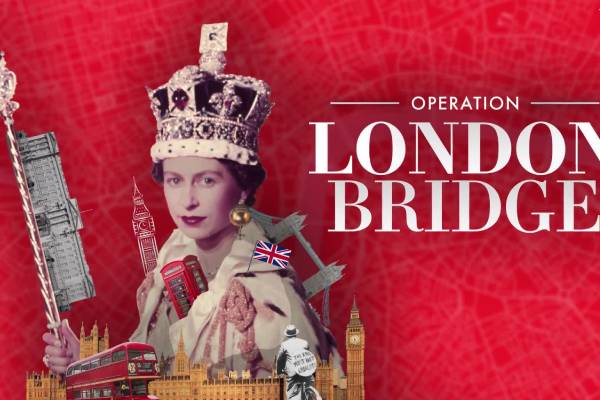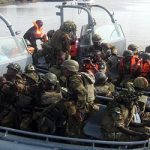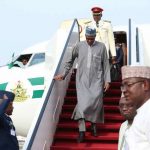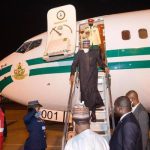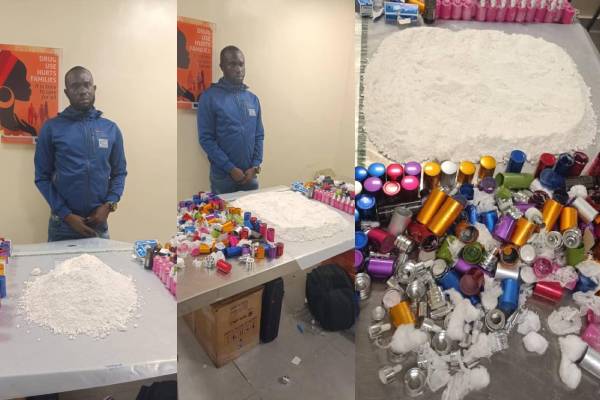London police chiefs and medics are bracing themselves for a security nightmare at the Queen’s funeral on Monday as they balance the need to protect the world’s top leaders and dignitaries with the public’s desire to mourn their much-loved monarch.
Some have compared the event in scale to the London Olympics, but in truth the state funeral — the first in Britain since Winston Churchill died in 1965 — is likely to dwarf the 2012 sporting extravaganza.
Codenamed “Operation London Bridge,” arrangements for Britain’s longest-serving monarch have been carefully pored over for years by the many agencies involved, with the Queen herself signing off on every detail before her death.
The city has already seen unprecedented crowds viewing the official lying-in-state, which will run until 6.30 a.m. (1.30 a.m. ET) on Monday, just hours before the funeral procession to Westminster Abbey commences. The sheer numbers caused queueing to be temporily paused on Friday.
In an interview with Sky News earlier this week, London Mayor Sadiq Khan said of the scale: “If you think about the London marathon, the carnival, previous royal weddings, the Olympics — it’s all that in one.”
The three police forces which operate in the British capital — the Metropolitan Police, the City of London Police and British Transport Police — initiated their well-rehearsed plans across London as soon as the death of Elizabeth II was announced on September 8.
The funeral will be the “largest single policing event” that London’s Metropolitan Police force has undertaken, its Deputy Assistant Commissioner Stuart Cundy told reporters Friday.
“As a single event, this is larger than the 2012 Olympics. It is larger than the Platinum Jubilee weekend. And the range of officers, police staff, and all those supporting the operation is truly immense,” he said.
It is also set to “be the largest global protection operation the Met Police has ever undertaken” as “hundreds of world leaders and VIPs” descend upon London, he said.
When asked specifically how high-profile guests would be transported to London’s Westminster Abbey for the funeral service, Cundy declined to give specific details, saying it would not be conducive to a “safe and secure event and policing operation.”
Meanwhile the mammoth logistical operation has involved myriad other aspects, such as medics, toilets, street cleaning and road closures.
The size of the crowds turning out to pay their last respects is “impossible” to predict, according to Andy Byford, commissioner for Transport for London (TfL).
Byford described the funeral as “the biggest event” the transport network has ever faced in an interview with Britain’s PA Media news agency.
Comparing it to the Olympics, he said: “This is more challenging. It’s over a long period and although there are estimates, it is impossible to say with certainty how many people will turn up to the various elements, so we’ve assumed the highest possible number and we’re aligning our service to match that.”
Invitations have been sent to world leaders, politicians, public figures and European royals, as well as more than 500 international dignitaries. The security considerations are mind-boggling.
The British government is taking the lead on logistics but has refused to comment on specific “operational security arrangements.”
US President Joe Biden was among the first to confirm his attendance at the event, which will be attended by up to 2,000 people. Japanese Emperor Naruhito and Empress Masako will also travel to London, as will many other royals and global leaders.
London police chiefs and medics are bracing themselves for a security nightmare at the Queen’s funeral on Monday as they balance the need to protect the world’s top leaders and dignitaries with the public’s desire to mourn their much-loved monarch.
Some have compared the event in scale to the London Olympics, but in truth the state funeral — the first in Britain since Winston Churchill died in 1965 — is likely to dwarf the 2012 sporting extravaganza.
Codenamed “Operation London Bridge,” arrangements for Britain’s longest-serving monarch have been carefully pored over for years by the many agencies involved, with the Queen herself signing off on every detail before her death.
The city has already seen unprecedented crowds viewing the official lying-in-state, which will run until 6.30 a.m. (1.30 a.m. ET) on Monday, just hours before the funeral procession to Westminster Abbey commences. The sheer numbers caused queueing to be temporily paused on Friday.
In an interview with Sky News earlier this week, London Mayor Sadiq Khan said of the scale: “If you think about the London marathon, the carnival, previous royal weddings, the Olympics — it’s all that in one.”
The three police forces which operate in the British capital — the Metropolitan Police, the City of London Police and British Transport Police — initiated their well-rehearsed plans across London as soon as the death of Elizabeth II was announced on September 8.
The funeral will be the “largest single policing event” that London’s Metropolitan Police force has undertaken, its Deputy Assistant Commissioner Stuart Cundy told reporters Friday.
“As a single event, this is larger than the 2012 Olympics. It is larger than the Platinum Jubilee weekend. And the range of officers, police staff, and all those supporting the operation is truly immense,” he said.
It is also set to “be the largest global protection operation the Met Police has ever undertaken” as “hundreds of world leaders and VIPs” descend upon London, he said.
When asked specifically how high-profile guests would be transported to London’s Westminster Abbey for the funeral service, Cundy declined to give specific details, saying it would not be conducive to a “safe and secure event and policing operation.”
Meanwhile the mammoth logistical operation has involved myriad other aspects, such as medics, toilets, street cleaning and road closures.
The size of the crowds turning out to pay their last respects is “impossible” to predict, according to Andy Byford, commissioner for Transport for London (TfL).
Byford described the funeral as “the biggest event” the transport network has ever faced in an interview with Britain’s PA Media news agency.
Comparing it to the Olympics, he said: “This is more challenging. It’s over a long period and although there are estimates, it is impossible to say with certainty how many people will turn up to the various elements, so we’ve assumed the highest possible number and we’re aligning our service to match that.”
Invitations have been sent to world leaders, politicians, public figures and European royals, as well as more than 500 international dignitaries. The security considerations are mind-boggling.
The British government is taking the lead on logistics but has refused to comment on specific “operational security arrangements.”
US President Joe Biden was among the first to confirm his attendance at the event, which will be attended by up to 2,000 people. Japanese Emperor Naruhito and Empress Masako will also travel to London, as will many other royals and global leaders.
London police chiefs and medics are bracing themselves for a security nightmare at the Queen’s funeral on Monday as they balance the need to protect the world’s top leaders and dignitaries with the public’s desire to mourn their much-loved monarch.
Some have compared the event in scale to the London Olympics, but in truth the state funeral — the first in Britain since Winston Churchill died in 1965 — is likely to dwarf the 2012 sporting extravaganza.
Codenamed “Operation London Bridge,” arrangements for Britain’s longest-serving monarch have been carefully pored over for years by the many agencies involved, with the Queen herself signing off on every detail before her death.
The city has already seen unprecedented crowds viewing the official lying-in-state, which will run until 6.30 a.m. (1.30 a.m. ET) on Monday, just hours before the funeral procession to Westminster Abbey commences. The sheer numbers caused queueing to be temporily paused on Friday.
In an interview with Sky News earlier this week, London Mayor Sadiq Khan said of the scale: “If you think about the London marathon, the carnival, previous royal weddings, the Olympics — it’s all that in one.”
The three police forces which operate in the British capital — the Metropolitan Police, the City of London Police and British Transport Police — initiated their well-rehearsed plans across London as soon as the death of Elizabeth II was announced on September 8.
The funeral will be the “largest single policing event” that London’s Metropolitan Police force has undertaken, its Deputy Assistant Commissioner Stuart Cundy told reporters Friday.
“As a single event, this is larger than the 2012 Olympics. It is larger than the Platinum Jubilee weekend. And the range of officers, police staff, and all those supporting the operation is truly immense,” he said.
It is also set to “be the largest global protection operation the Met Police has ever undertaken” as “hundreds of world leaders and VIPs” descend upon London, he said.
When asked specifically how high-profile guests would be transported to London’s Westminster Abbey for the funeral service, Cundy declined to give specific details, saying it would not be conducive to a “safe and secure event and policing operation.”
Meanwhile the mammoth logistical operation has involved myriad other aspects, such as medics, toilets, street cleaning and road closures.
The size of the crowds turning out to pay their last respects is “impossible” to predict, according to Andy Byford, commissioner for Transport for London (TfL).
Byford described the funeral as “the biggest event” the transport network has ever faced in an interview with Britain’s PA Media news agency.
Comparing it to the Olympics, he said: “This is more challenging. It’s over a long period and although there are estimates, it is impossible to say with certainty how many people will turn up to the various elements, so we’ve assumed the highest possible number and we’re aligning our service to match that.”
Invitations have been sent to world leaders, politicians, public figures and European royals, as well as more than 500 international dignitaries. The security considerations are mind-boggling.
The British government is taking the lead on logistics but has refused to comment on specific “operational security arrangements.”
US President Joe Biden was among the first to confirm his attendance at the event, which will be attended by up to 2,000 people. Japanese Emperor Naruhito and Empress Masako will also travel to London, as will many other royals and global leaders.
London police chiefs and medics are bracing themselves for a security nightmare at the Queen’s funeral on Monday as they balance the need to protect the world’s top leaders and dignitaries with the public’s desire to mourn their much-loved monarch.
Some have compared the event in scale to the London Olympics, but in truth the state funeral — the first in Britain since Winston Churchill died in 1965 — is likely to dwarf the 2012 sporting extravaganza.
Codenamed “Operation London Bridge,” arrangements for Britain’s longest-serving monarch have been carefully pored over for years by the many agencies involved, with the Queen herself signing off on every detail before her death.
The city has already seen unprecedented crowds viewing the official lying-in-state, which will run until 6.30 a.m. (1.30 a.m. ET) on Monday, just hours before the funeral procession to Westminster Abbey commences. The sheer numbers caused queueing to be temporily paused on Friday.
In an interview with Sky News earlier this week, London Mayor Sadiq Khan said of the scale: “If you think about the London marathon, the carnival, previous royal weddings, the Olympics — it’s all that in one.”
The three police forces which operate in the British capital — the Metropolitan Police, the City of London Police and British Transport Police — initiated their well-rehearsed plans across London as soon as the death of Elizabeth II was announced on September 8.
The funeral will be the “largest single policing event” that London’s Metropolitan Police force has undertaken, its Deputy Assistant Commissioner Stuart Cundy told reporters Friday.
“As a single event, this is larger than the 2012 Olympics. It is larger than the Platinum Jubilee weekend. And the range of officers, police staff, and all those supporting the operation is truly immense,” he said.
It is also set to “be the largest global protection operation the Met Police has ever undertaken” as “hundreds of world leaders and VIPs” descend upon London, he said.
When asked specifically how high-profile guests would be transported to London’s Westminster Abbey for the funeral service, Cundy declined to give specific details, saying it would not be conducive to a “safe and secure event and policing operation.”
Meanwhile the mammoth logistical operation has involved myriad other aspects, such as medics, toilets, street cleaning and road closures.
The size of the crowds turning out to pay their last respects is “impossible” to predict, according to Andy Byford, commissioner for Transport for London (TfL).
Byford described the funeral as “the biggest event” the transport network has ever faced in an interview with Britain’s PA Media news agency.
Comparing it to the Olympics, he said: “This is more challenging. It’s over a long period and although there are estimates, it is impossible to say with certainty how many people will turn up to the various elements, so we’ve assumed the highest possible number and we’re aligning our service to match that.”
Invitations have been sent to world leaders, politicians, public figures and European royals, as well as more than 500 international dignitaries. The security considerations are mind-boggling.
The British government is taking the lead on logistics but has refused to comment on specific “operational security arrangements.”
US President Joe Biden was among the first to confirm his attendance at the event, which will be attended by up to 2,000 people. Japanese Emperor Naruhito and Empress Masako will also travel to London, as will many other royals and global leaders.
London police chiefs and medics are bracing themselves for a security nightmare at the Queen’s funeral on Monday as they balance the need to protect the world’s top leaders and dignitaries with the public’s desire to mourn their much-loved monarch.
Some have compared the event in scale to the London Olympics, but in truth the state funeral — the first in Britain since Winston Churchill died in 1965 — is likely to dwarf the 2012 sporting extravaganza.
Codenamed “Operation London Bridge,” arrangements for Britain’s longest-serving monarch have been carefully pored over for years by the many agencies involved, with the Queen herself signing off on every detail before her death.
The city has already seen unprecedented crowds viewing the official lying-in-state, which will run until 6.30 a.m. (1.30 a.m. ET) on Monday, just hours before the funeral procession to Westminster Abbey commences. The sheer numbers caused queueing to be temporily paused on Friday.
In an interview with Sky News earlier this week, London Mayor Sadiq Khan said of the scale: “If you think about the London marathon, the carnival, previous royal weddings, the Olympics — it’s all that in one.”
The three police forces which operate in the British capital — the Metropolitan Police, the City of London Police and British Transport Police — initiated their well-rehearsed plans across London as soon as the death of Elizabeth II was announced on September 8.
The funeral will be the “largest single policing event” that London’s Metropolitan Police force has undertaken, its Deputy Assistant Commissioner Stuart Cundy told reporters Friday.
“As a single event, this is larger than the 2012 Olympics. It is larger than the Platinum Jubilee weekend. And the range of officers, police staff, and all those supporting the operation is truly immense,” he said.
It is also set to “be the largest global protection operation the Met Police has ever undertaken” as “hundreds of world leaders and VIPs” descend upon London, he said.
When asked specifically how high-profile guests would be transported to London’s Westminster Abbey for the funeral service, Cundy declined to give specific details, saying it would not be conducive to a “safe and secure event and policing operation.”
Meanwhile the mammoth logistical operation has involved myriad other aspects, such as medics, toilets, street cleaning and road closures.
The size of the crowds turning out to pay their last respects is “impossible” to predict, according to Andy Byford, commissioner for Transport for London (TfL).
Byford described the funeral as “the biggest event” the transport network has ever faced in an interview with Britain’s PA Media news agency.
Comparing it to the Olympics, he said: “This is more challenging. It’s over a long period and although there are estimates, it is impossible to say with certainty how many people will turn up to the various elements, so we’ve assumed the highest possible number and we’re aligning our service to match that.”
Invitations have been sent to world leaders, politicians, public figures and European royals, as well as more than 500 international dignitaries. The security considerations are mind-boggling.
The British government is taking the lead on logistics but has refused to comment on specific “operational security arrangements.”
US President Joe Biden was among the first to confirm his attendance at the event, which will be attended by up to 2,000 people. Japanese Emperor Naruhito and Empress Masako will also travel to London, as will many other royals and global leaders.
London police chiefs and medics are bracing themselves for a security nightmare at the Queen’s funeral on Monday as they balance the need to protect the world’s top leaders and dignitaries with the public’s desire to mourn their much-loved monarch.
Some have compared the event in scale to the London Olympics, but in truth the state funeral — the first in Britain since Winston Churchill died in 1965 — is likely to dwarf the 2012 sporting extravaganza.
Codenamed “Operation London Bridge,” arrangements for Britain’s longest-serving monarch have been carefully pored over for years by the many agencies involved, with the Queen herself signing off on every detail before her death.
The city has already seen unprecedented crowds viewing the official lying-in-state, which will run until 6.30 a.m. (1.30 a.m. ET) on Monday, just hours before the funeral procession to Westminster Abbey commences. The sheer numbers caused queueing to be temporily paused on Friday.
In an interview with Sky News earlier this week, London Mayor Sadiq Khan said of the scale: “If you think about the London marathon, the carnival, previous royal weddings, the Olympics — it’s all that in one.”
The three police forces which operate in the British capital — the Metropolitan Police, the City of London Police and British Transport Police — initiated their well-rehearsed plans across London as soon as the death of Elizabeth II was announced on September 8.
The funeral will be the “largest single policing event” that London’s Metropolitan Police force has undertaken, its Deputy Assistant Commissioner Stuart Cundy told reporters Friday.
“As a single event, this is larger than the 2012 Olympics. It is larger than the Platinum Jubilee weekend. And the range of officers, police staff, and all those supporting the operation is truly immense,” he said.
It is also set to “be the largest global protection operation the Met Police has ever undertaken” as “hundreds of world leaders and VIPs” descend upon London, he said.
When asked specifically how high-profile guests would be transported to London’s Westminster Abbey for the funeral service, Cundy declined to give specific details, saying it would not be conducive to a “safe and secure event and policing operation.”
Meanwhile the mammoth logistical operation has involved myriad other aspects, such as medics, toilets, street cleaning and road closures.
The size of the crowds turning out to pay their last respects is “impossible” to predict, according to Andy Byford, commissioner for Transport for London (TfL).
Byford described the funeral as “the biggest event” the transport network has ever faced in an interview with Britain’s PA Media news agency.
Comparing it to the Olympics, he said: “This is more challenging. It’s over a long period and although there are estimates, it is impossible to say with certainty how many people will turn up to the various elements, so we’ve assumed the highest possible number and we’re aligning our service to match that.”
Invitations have been sent to world leaders, politicians, public figures and European royals, as well as more than 500 international dignitaries. The security considerations are mind-boggling.
The British government is taking the lead on logistics but has refused to comment on specific “operational security arrangements.”
US President Joe Biden was among the first to confirm his attendance at the event, which will be attended by up to 2,000 people. Japanese Emperor Naruhito and Empress Masako will also travel to London, as will many other royals and global leaders.
London police chiefs and medics are bracing themselves for a security nightmare at the Queen’s funeral on Monday as they balance the need to protect the world’s top leaders and dignitaries with the public’s desire to mourn their much-loved monarch.
Some have compared the event in scale to the London Olympics, but in truth the state funeral — the first in Britain since Winston Churchill died in 1965 — is likely to dwarf the 2012 sporting extravaganza.
Codenamed “Operation London Bridge,” arrangements for Britain’s longest-serving monarch have been carefully pored over for years by the many agencies involved, with the Queen herself signing off on every detail before her death.
The city has already seen unprecedented crowds viewing the official lying-in-state, which will run until 6.30 a.m. (1.30 a.m. ET) on Monday, just hours before the funeral procession to Westminster Abbey commences. The sheer numbers caused queueing to be temporily paused on Friday.
In an interview with Sky News earlier this week, London Mayor Sadiq Khan said of the scale: “If you think about the London marathon, the carnival, previous royal weddings, the Olympics — it’s all that in one.”
The three police forces which operate in the British capital — the Metropolitan Police, the City of London Police and British Transport Police — initiated their well-rehearsed plans across London as soon as the death of Elizabeth II was announced on September 8.
The funeral will be the “largest single policing event” that London’s Metropolitan Police force has undertaken, its Deputy Assistant Commissioner Stuart Cundy told reporters Friday.
“As a single event, this is larger than the 2012 Olympics. It is larger than the Platinum Jubilee weekend. And the range of officers, police staff, and all those supporting the operation is truly immense,” he said.
It is also set to “be the largest global protection operation the Met Police has ever undertaken” as “hundreds of world leaders and VIPs” descend upon London, he said.
When asked specifically how high-profile guests would be transported to London’s Westminster Abbey for the funeral service, Cundy declined to give specific details, saying it would not be conducive to a “safe and secure event and policing operation.”
Meanwhile the mammoth logistical operation has involved myriad other aspects, such as medics, toilets, street cleaning and road closures.
The size of the crowds turning out to pay their last respects is “impossible” to predict, according to Andy Byford, commissioner for Transport for London (TfL).
Byford described the funeral as “the biggest event” the transport network has ever faced in an interview with Britain’s PA Media news agency.
Comparing it to the Olympics, he said: “This is more challenging. It’s over a long period and although there are estimates, it is impossible to say with certainty how many people will turn up to the various elements, so we’ve assumed the highest possible number and we’re aligning our service to match that.”
Invitations have been sent to world leaders, politicians, public figures and European royals, as well as more than 500 international dignitaries. The security considerations are mind-boggling.
The British government is taking the lead on logistics but has refused to comment on specific “operational security arrangements.”
US President Joe Biden was among the first to confirm his attendance at the event, which will be attended by up to 2,000 people. Japanese Emperor Naruhito and Empress Masako will also travel to London, as will many other royals and global leaders.
London police chiefs and medics are bracing themselves for a security nightmare at the Queen’s funeral on Monday as they balance the need to protect the world’s top leaders and dignitaries with the public’s desire to mourn their much-loved monarch.
Some have compared the event in scale to the London Olympics, but in truth the state funeral — the first in Britain since Winston Churchill died in 1965 — is likely to dwarf the 2012 sporting extravaganza.
Codenamed “Operation London Bridge,” arrangements for Britain’s longest-serving monarch have been carefully pored over for years by the many agencies involved, with the Queen herself signing off on every detail before her death.
The city has already seen unprecedented crowds viewing the official lying-in-state, which will run until 6.30 a.m. (1.30 a.m. ET) on Monday, just hours before the funeral procession to Westminster Abbey commences. The sheer numbers caused queueing to be temporily paused on Friday.
In an interview with Sky News earlier this week, London Mayor Sadiq Khan said of the scale: “If you think about the London marathon, the carnival, previous royal weddings, the Olympics — it’s all that in one.”
The three police forces which operate in the British capital — the Metropolitan Police, the City of London Police and British Transport Police — initiated their well-rehearsed plans across London as soon as the death of Elizabeth II was announced on September 8.
The funeral will be the “largest single policing event” that London’s Metropolitan Police force has undertaken, its Deputy Assistant Commissioner Stuart Cundy told reporters Friday.
“As a single event, this is larger than the 2012 Olympics. It is larger than the Platinum Jubilee weekend. And the range of officers, police staff, and all those supporting the operation is truly immense,” he said.
It is also set to “be the largest global protection operation the Met Police has ever undertaken” as “hundreds of world leaders and VIPs” descend upon London, he said.
When asked specifically how high-profile guests would be transported to London’s Westminster Abbey for the funeral service, Cundy declined to give specific details, saying it would not be conducive to a “safe and secure event and policing operation.”
Meanwhile the mammoth logistical operation has involved myriad other aspects, such as medics, toilets, street cleaning and road closures.
The size of the crowds turning out to pay their last respects is “impossible” to predict, according to Andy Byford, commissioner for Transport for London (TfL).
Byford described the funeral as “the biggest event” the transport network has ever faced in an interview with Britain’s PA Media news agency.
Comparing it to the Olympics, he said: “This is more challenging. It’s over a long period and although there are estimates, it is impossible to say with certainty how many people will turn up to the various elements, so we’ve assumed the highest possible number and we’re aligning our service to match that.”
Invitations have been sent to world leaders, politicians, public figures and European royals, as well as more than 500 international dignitaries. The security considerations are mind-boggling.
The British government is taking the lead on logistics but has refused to comment on specific “operational security arrangements.”
US President Joe Biden was among the first to confirm his attendance at the event, which will be attended by up to 2,000 people. Japanese Emperor Naruhito and Empress Masako will also travel to London, as will many other royals and global leaders.

